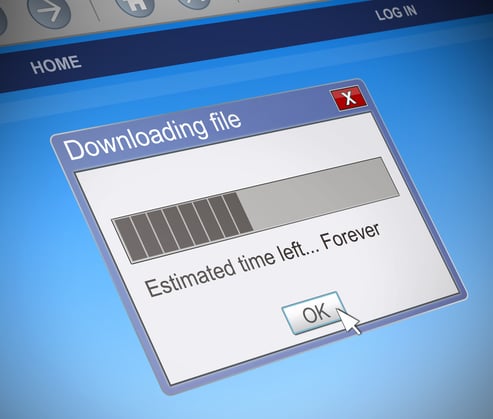HFC | Broadband | Service Providers
How Service Providers can Increase Bandwidth at a Fraction of the Cost

Todd Gingrass, Vice President of Business Development at CCI Systems, is responsible for the go-to-market development and enablement of each solution set and offering, covering the entirety of a broadband provider’s network. This includes managing industry partners and developing those partnerships into solutions for providers to expand their service area and exceed current subscriber expectations.
The COVID-19 Pandemic exposed different needs when it came to what subscribers looked for from their service provider. As the world comes to a hopeful end of the pandemic, one major demand that reared its head was the need for increased upstream bandwidth speeds to support the new activities that large portions of broadband subscriber bases are now taking part in.
The push for more bandwidth, especially in the upstream, has caused a stair-step in an otherwise continuous upward trend over the last 20 years. As the world continues to push for higher connection speeds, increased data packages, and a more instantaneous experience with the digital world, a regression in this trend back to the previous trajectory is unlikely.
For service providers, the weight of this situation is falling directly on their shoulders, so it's important to begin taking steps to increase bandwidth and better serve subscribers who are more connected than ever.
What Is Causing the Upstream Stress?

There has always been demand for upstream bandwidth to service the simple needs of the subscriber.
Service operators have always offered things like cloud storage of photo and video, minor teleconferencing supporting video, and uploading content onto platforms, like YouTube. By offering speeds at a 10.1 ratio (10 Mbps in the downstream to every 1 Mbps in the upstream), you were good to go. But if there has always been enough upstream to accomplish what the subscriber needs... why are we talking about expanding it?
Historically, the upstream has weathered the storm of whatever subscribers threw at it. The problem emerged as downstream packages expanded and placed increased demand on the upstream, along with the stresses work-from-home (WFH) and schooling from home environments have caused on bandwidth.
How can growing downstream packages actually place more stress on your upstream?
Simply put, downstream and upstream are always talking to each other and relaying information.
For example, if you are streaming a Netflix show your downstream bandwidth is pulling the data down from Netflix while your upstream bandwidth helps to communicate a message telling exactly how much bandwidth you have available. If you have ever been watching Netflix and your resolution dropped, it was probably because your upstream was communicating back that you didn’t have enough available bandwidth to continue streaming at the higher resolution.
In this case, people often think that they need to expand their downstream in order to make more bandwidth available. The problem though, is that if you only expand your downstream without also addressing your upstream, you can begin to “flood” your upstream. To use the Netflix example again, if you now have an increased downstream package you will be able to pull down even more information than you previously could, the problem though, is that your upstream now can not send the communications back to tell how much bandwidth is available.
Your expanded downstream has essentially overloaded your upstream with information and has not left enough room for the upstream to communicate important messages back regarding the status of the network. To remedy this issue, an expanded upstream is needed.
Referencing the stair-step jump in bandwidth consumption mentioned earlier, as businesses have been pushed to work from home and schooling has gone from the classroom to the dining room table, the upstream has finally met its match.
Sporadic teleconferencing has been replaced by incessant Zoom meetings that can add up to over eight hours of streaming per day, per person! As you work from home and your child goes to school from home, the stress on your upstream bandwidth is greater than it's ever been.
Now have not only a small portion of your subscribers doing this, but the large majority, and you have a major bandwidth problem. Who on your team is going to be impacted by this lack of upstream for your subscribers?
Let's find out.
Who On Your Team is Impacted Due to Lack of Bandwidth for Subscribers?
The implications of bandwidth scarcity are not going to be localized to one section of your team, all members who help deliver service to your customers are going to feel the ill effects of this absence of service capabilities. From Customer Service Representatives to C-Level Executives, here is what you can expect.
Customer Service Representatives
You probably could have guessed this one, or maybe your team is experiencing some of this right now. The first place your subscribers are going to go when their service is less than satisfactory is to your customer service team. The unsung heroes of the telecom world, the customer service team is built for the sole purpose of fielding customer calls and providing solutions to hopefully remediate the problem at hand. Although their training likely prepared them greatly for almost every scenario that would come in from a subscriber, they have never seen a scenario like this…none of us have. The increased stress on your networks upstream can completely handcuff your customer service team and leave them looking for answers. There is an answer, but we'll get to that later.
Technicians
Your technicians have one of the most difficult day-to-day jobs in the industry in just keeping your network healthy and operational while trying to reduce the number of calls your customer service team receives. There are issues that can pop up all over a network that your technicians almost always have the answer for, but when your resources are tapped out and there is no more bandwidth to be had, they can be left looking for a solution that they don't have in their toolbox.
Network Leadership and Executive Team
Undoubtedly a network's leadership team has noticed the strain that the lack of upstream has put on the rest of their team, and now is the time to act on that. It's time to create a plan to expand the upstream and alleviate some of the stress that both your team and the subscribers they serve are experiencing.
How to Solve the Bandwidth Scarcity Problem
In the past, a project like increasing your bandwidth capabilities for all of your subscribers was a massive complete upgrade project only done about once every ten years. These projects accounted for a massive amount of spend for operators and were highly disruptive to subscribers as the old gear was replaced to enable an increase in mostly downstream RF bandwidth to allow for space to offer new services that were demanded. Before DOCSIS, the upgrades were to offer more video programming, but after DOCSIS came along this became the major source of need for expansion.
Now, there is a new solution that greatly reduces the cost to operators and the downtime for subscribers, all while increasing available upstream bandwidth by 3x. For many years, operators have survived with an available 42 MHz of upstream bandwidth, of which only roughly half was suitable for use. Now, rather than committing a sizeable amount of capital to build out a fiber network to replace their current HFC architecture, we are seeing operators perform 85 MHz upgrades that are allowing an additional 43 MHz of usable bandwidth.
In theory, this increase takes them from their 20-25 MHz of suitable bandwidth to three times that; about 65-70 MHz. So, how can you triple your bandwidth without incurring the sizeable expense associated with an overbuild? The nature of this upgrade being a module upgrade is the answer.
Simply put, this is just removing your existing hardware and replacing it with updated gear that can accomplish the 85MHz upgrade. Over the last 12-18 months this solution, paired with an appropriate lifecycle plan for the network and ongoing monitoring, has been our most recommended and adopted solution for HFC operators who are looking to move towards fiber speeds without having to implement a fiber solution.
What More Bandwidth Means For You
If all of the bandwidth we have available for subscribers is thought of as a swimming pool, your 85 MHz upgrade will be the driving force in expanding the size of that pool. No longer will people be bumping into each other and using the same space, but rather, they will have plenty of space to consume data without disruption.
What does this mean for you and your team? To revisit some of the team members impacted by slow upstream bandwidth earlier, your customer support representatives will experience a drop in trouble calls, your technicians will not need to roll trucks out into the field as often, and your executive team will be able to move their focus onto the next project you will undertake to move the network into the future.
Also, as a fringe benefit, the speed of this upgrade allows for the introduction of new service and speed packages for your subscribers which will lead to increased revenue and an expanded subscriber base.
Not Sure Where to Start on Your Bandwidth Expansion?
Sometimes operators aren't quite sure where to start. To figure out if an 85 MHz upgrade is the right solution for your network, a great place to begin would be a network assessment and sample design.
Through surveying multiple areas of your network, we will be able to extrapolate data and put together a sample design for you telling you exactly what outcome you will achieve if you spend "X" amount of dollars on different upgrades.
This "if/then" model has helped multiple operators see the ROI they can expect on their project before committing costly resources to it. CCI has been helping operators make the best decision(s) for their networks for over 60 years, and to this point we have not seen two tools more valuable in figuring out what that right choice might be than network assessments and sample designs. Contact a CCI expert today to get started with your network assessment and sample design in order to set you on the path towards expanding bandwidth for your subscribers.

